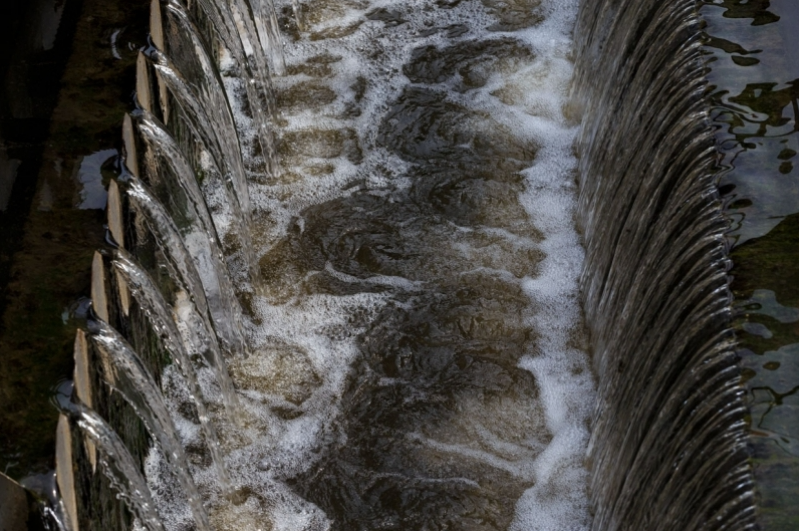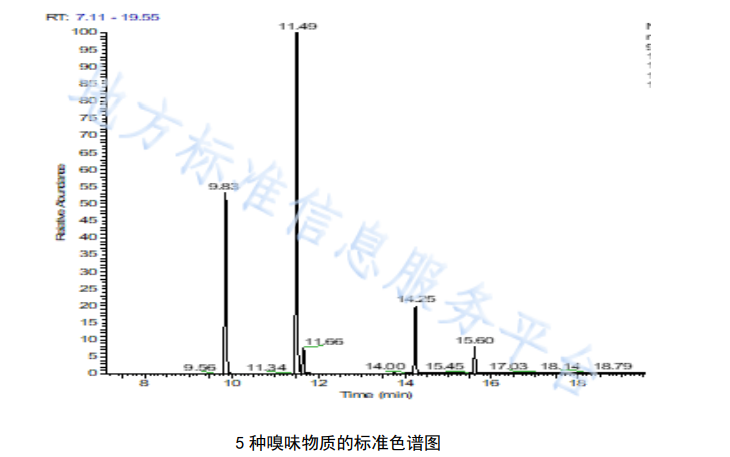The principle of mass spectrometry for detecting odor substances is to use solid-phase extraction column to concentrate and enrich the odor substances in water, elute the odor substances retained on the solid-phase extraction column with eluent, and then use gas chromatography-mass spectrometry to qualitatively and quantitatively analyze the eluate after solid-phase extraction.

Reagents used for detection
1. Solid phase extraction column: HLB (6ml, 200mg) or other equivalent solid phase extraction column.
2. High purity water: the water quality meets the requirements of GB / t33087.
3. Methanol: chromatographically pure.
4. Dichloromethane: chromatographically pure.
5. Anhydrous sodium sulfate: analytical pure. Burn it at 400 ℃ for 4h, cool it, put it into a ground glass bottle, and put it in a dryer for storage.
6. Standard solution of odor substances: 2,4,6-trichlorobenzyme, 2-isopropyl-3-methoxypyrazine, 2-isobutyl-3-methoxypyrazine, 2-methylisocamphenyl alcohol, osmanthin, ρ= 100mg / L, solvent methanol, certified reference material.
7. Standard solution for odor substances: 1.0mg/l, transfer 100ul of standard solution to a 10ml volumetric flask, and fix the volume with methanol. Refrigerate under 4 ℃ and keep away from light.
8. Helium: purity ≥ 99.999%.
9. Microinjector: 100ul and 1000ul.
Instruments required for testing
1. Gas chromatography-mass spectrometer: equipped with electron bombardment ion source.
2. Capillary column: hp-5ms (30M × 0.25mm × 0.25 UM) or other equivalent chromatographic column.
3. Solid phase extraction device.
Water sample preparation
1. Activation: activate the solid-phase extraction column with 5ml dichloromethane, 5ml methanol and 5ml high-purity water.
2. Extraction: take 1L water sample and pass it through the activated solid-phase extraction column at a flow rate of 5ml / min ~ 10ml / min to complete solid-phase extraction enrichment.
3. Rinsing: rinse the solid-phase extraction column with 5ml high-purity water at a flow rate of 10ml / min to remove some impurities adsorbed on the solid-phase extraction column, and blow dry with nitrogen after rinsing.
4. Elution: elute the components to be measured adsorbed on the solid-phase extraction column with 2ml dichloromethane at a flow rate of 2ml / min, collect the eluent in the collection tube, accurately fix the volume of the eluent to 2.0ml, mix well and prepare for use. If water remains in the eluent, add anhydrous sodium sulfate for dehydration and drying.
Detection steps:
Chromatographic conditions
Injection port temperature: 250 ℃.
Injection volume: 1ul, no split injection.
Carrier gas flow rate: 1.0ml/min.
Column temperature: 50 ℃ for 1min, 8 ℃ / min to 180 ℃ for 3min.
Transmission line temperature: 280 ℃.
Mass spectrometry conditions
Ion source: electron bombardment ion source.
Ion source temperature: 230 ℃.
Quantitative method: select ion scanning (SIM). See the following figure for quantitative ions and reference ions.

Drawing of calibration curve
1. This method uses external standard method for quantification.
2. Preparation of calibration series. Take six 10ml volumetric flasks, and accurately add 50ul, 100ul, 200ul, 400ul, 600ul, and 800ul standard use solution of odor substances in turn with a micro syringe. Fix the volume with dichloromethane. The mixed standard series concentrations of the five odor substances are 5.0ug/l, 10ug / L, 20ug / L, 40ug / L, 60ug / L, and 80ug / L respectively. According to the order of concentration from low to high, the concentration is measured on the machine in turn. The calibration curve is drawn with the chromatographic peak area as the ordinate and the mass concentration as the abscissa.
Sample determination
1. The automatic sampler is used for injection, and the injection volume is 1ul.
2. Put the prepared sample on the machine for measurement.
3. The standard chromatogram of odor substances is shown in the following figure.

Qualitative results
The retention time of the sample and the relative strength of the reference ions were used for qualitative analysis. Under the same experimental conditions, the deviation between the retention time of the substance to be tested in the sample and the retention time of the standard solution is within ± 3%, and the tolerance of the relative strength of the reference ion is within ± 30%.
Quantitative results
Quantitative analysis was performed according to the peak area of the quantitative ion (M / z) chromatographic peak of the odor substance.
The above contents are from《DB37 / T 4162-2020 water quality - Determination of odor substances - solid phase extraction gas chromatography mass spectrometry》



